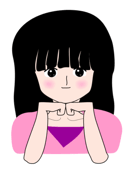Illusion using movies #4
since February 23, 2006
Warning: This page includes real animations. Please do not keep watching them for a long time. Although this page has carefully avoided the known harmful stimuli, unknown ones might happen to be included. Never copy them.
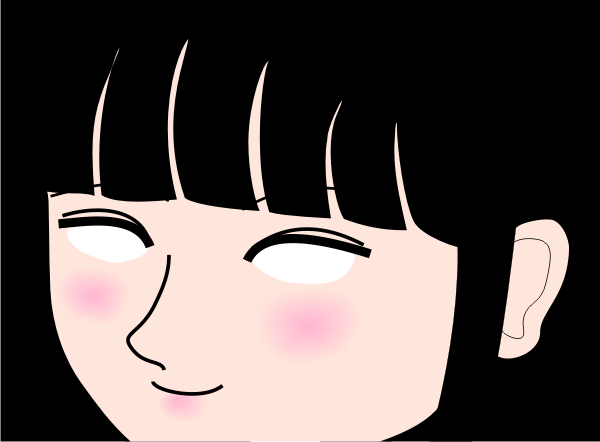
"Iris-induced line motion illusion of eyelashes"
For explanation, see the Japanese page.
Copyright Akiyoshi Kitaoka 2008 (June 16)
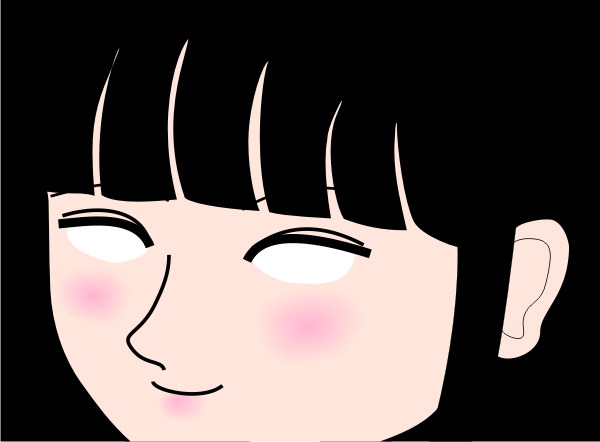
Control stimulus
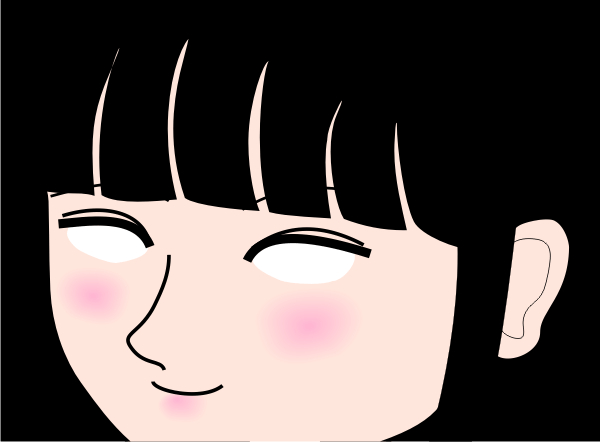
"Eyelash-induced iris falling illusion"
Copyright Akiyoshi Kitaoka 2008 (June 16)
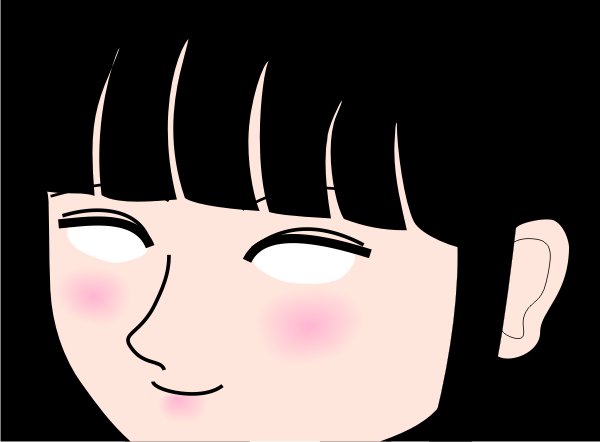
Control stimulus
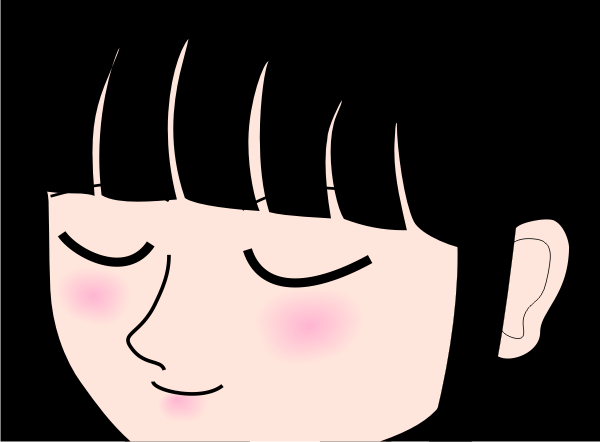
"Apparent movement-accelerated line motion illusion of eyelashes"
Copyright Akiyoshi Kitaoka 2008 (June 17)
"Radiated noise"
After adapting this motion stimulus, illusory radiation of noise appears in a short time.
Copyright Akiyoshi Kitaoka 2008 (May 1)
Copyright Akiyoshi Kitaoka 2008 (April 30)
"Successive Ebbinghaus illusion"
The Ebbinghaus illusion occurs even if two groups are successively displayed.
Copyright Akiyoshi Kitaoka 2008 (January 16)
"Pulses of voices"
The image appears to fluctuate.
Copyright Akiyoshi Kitaoka 2007 (September 4)
"Fluttering hearts 3"
Hearts appear to flutter. For those those who wear glasses, try to move them; then the hearts appear to move. For the majority, the hearts appear to be in front of the surface of white random dots when they are bright, while they appear to be behind it when they are dark.
Copyright Akiyoshi Kitaoka 2006 (December 20)
References
Kitaoka, A. and Ashida, H. (2007) A variant of the
anomalous motion illusion based upon contrast and visual latency. Perception,
36, 1019-1035. ![]() new! PDF
request to me
new! PDF
request to me
Kitaoka, A, Kuriki, I. and Ashida, H. (2006) The center-of-gravity model of chromostereopsis. Ritsumeikan Journal of Human Sciences, 11, 59-64. PDF
"Fluttering hearts 2"
Hearts appear to flutter. For those those who wear glasses, try to move them; then the hearts appear to move. For the majority, the hearts appear to be in front of the surface of white random dots when they are bright, while they appear to be behind it when they are dark.
Copyright Akiyoshi Kitaoka 2006 (December 19)
References
Kitaoka, A. and Ashida, H. (2007) A variant of the
anomalous motion illusion based upon contrast and visual latency. Perception,
36, 1019-1035. ![]() new! PDF
request to me
new! PDF
request to me
Kitaoka, A, Kuriki, I. and Ashida, H. (2006) The center-of-gravity model of chromostereopsis. Ritsumeikan Journal of Human Sciences, 11, 59-64. PDF
"Contracting record"
A record appears to contract. If you can stop this animation, an expanding motion aftereffect is observed.
Copyright Akiyoshi Kitaoka 2006 (September 17)
I think this illusion is the same as the spoked wheel illusion proposed by Professor Stuart Anstis.
Anstis, S. (2003) Levels of motion perception. In Harris, L. and Jenkin, M. (Eds.) Levels of Perception, New York: Springer.
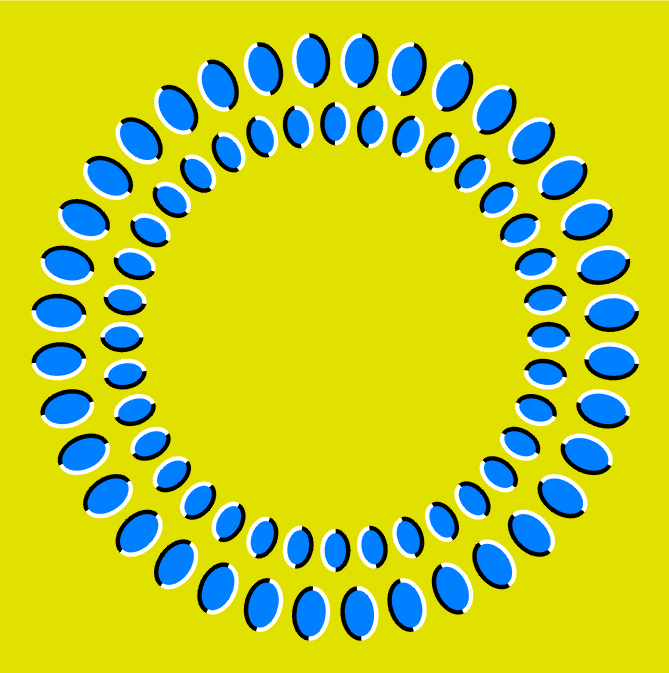
"Perceptual motion machine"
The inner ring appears to rotate clockwise while the outer one counterclockwise like a perpetual motion machine.
Copyright Akiyoshi Kitaoka 2006 (September 2)
Actually, animation is not indispensable for this effect as shown below.
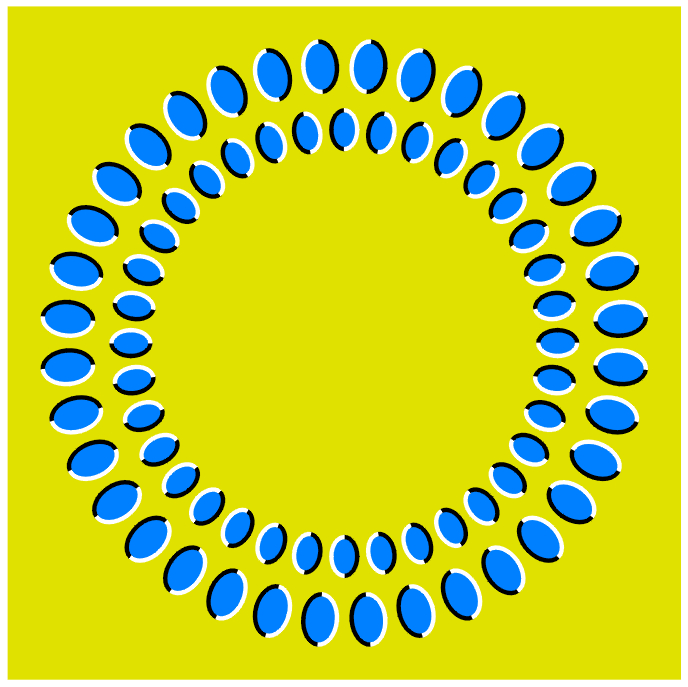
"Curvature of paths"
Two dots move rightward along parallel paths, which appear to tilt or curve.
Copyright Akiyoshi .Kitaoka 2006 (August 23)
As to this illusion, Sumi and Nakamura (2005) (in Handbook of the Science of Illusion) reviewed three papers shown below.
Nihei, Y. (1973) A preliminary study on the geometrical illusion of motion path: The kinetic illusion. Tohoku Psychologica Folia, 32, 108-114.
Nihei, Y. (1975) The effect of direction of motion on the magnitude of the geometrical illusion of motion path: The kinetic illusion II. Tohoku Psychologica Folia, 34, 88-94.
Swanston, M. T. (1984) Displacement of the path of perceived movement by intersection with static contours. Perception & Psychophysics, 36, 324-328.
---
Akiyoshi's observation: It seems that the apparent tilt of the path is acute-angle expansion for the central vision while that is acute-angle contraction for the peripheral vision. I am not sure whether or not this observation is mentioned in the papers shown above, becuase I have not read them yet. <August 23, 2006>
Akiyoshi's observation 2: I read the papers. Nihei (1973, 1975) examined the kinetic effect of the Poggendorff illusion but did not report that of the Zöllner illusion. Thus, Swanston (1984) was the first who reported the kinetic effect of the Zöllner illusion. In addition, he did not mention the peripheral reversal. <August 24, 2006>
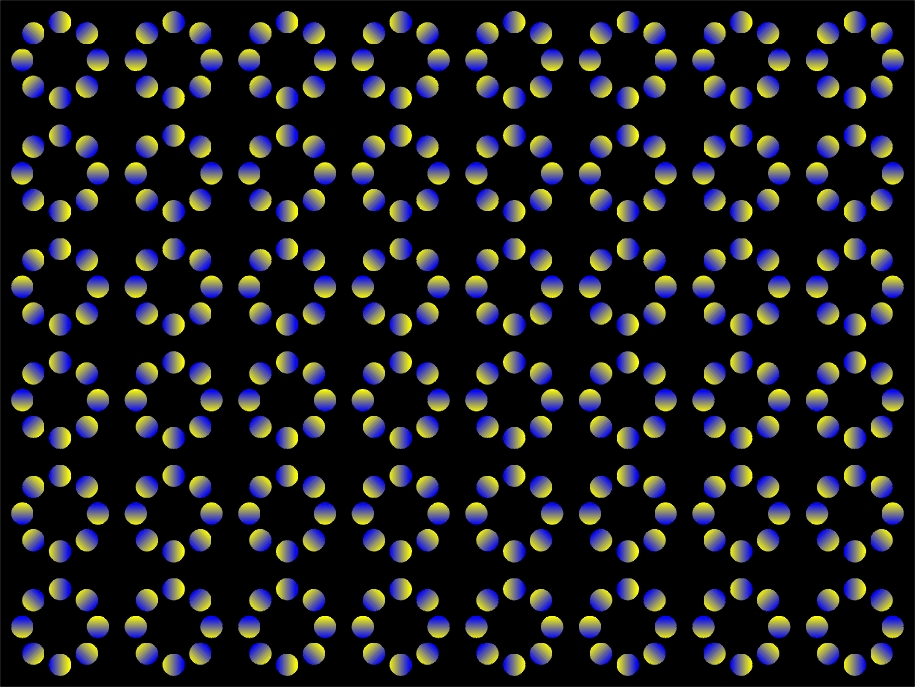
"Ball washing"
Rings of balls appear to rotate.
Copyright Akiyoshi Kitaoka 2006 (February 23)
